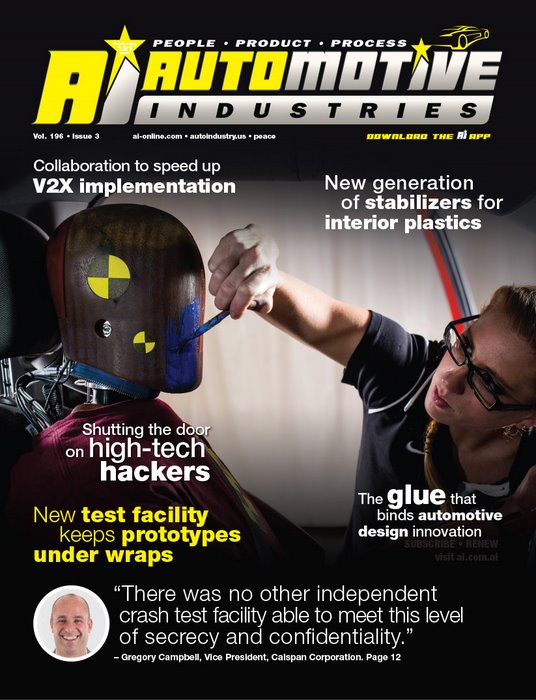
Improved levels of protection for vehicle occupants from one generation of a particular model to the next are one of the expectations of both customers and the authorities.
Around the world authorities are attempting to reduce injuries and fatalities resulting from vehicle accidents. Consumers have also become more aware of the dangers of being on increasingly congested roads, and are demanding that the vehicles they drive keep them safe. In order to meet those expectations, and to comply with regulated minimum standards, OEMs have to test both vehicles and the equipment which is added to them often long before they are introduced to the market-place. One of the world’s most sophisticated and secure test facilities to test prototype vehicles is taking shape in Buffalo, New York.
Automotive Industries (AI) asked Gregory Campbell, Vice President, Calspan Corporation, when does the company plan to officially open its new crash center.
Campbell: Construction is scheduled to be completed in September and we plan to open the facility for customer testing in October 2017, after a comprehensive period of internal commissioning tests. Our extensive validation plan will demonstrate that each and every critical test parameter is controlled and understood.
AI: The new facility will be enclosed – why is this important?
Campbell: Over the past five years we have focused our energy on understanding our customers’ needs and addressing those problems proactively. Listening to our customers, we came to understand that they really desired access to a crash test facility which was capable of receiving a prototype vehicle, testing it, and returning it to the customer for post test analysis without the vehicle ever seeing the light of day. There was no other independent crash test facility able to meet this level of confidentiality. With Calspan’s experience in handling classified military contracts for the Department of Defense we had the internal expertise to develop the procedures and physical security to meet these confidential and security protocols.
AI: How important is privacy to OEMs?
Campbell: Confidentiality and security are essential to vehicle manufacturers. They spend millions of dollars to develop new vehicle designs and millions more to market the new models to their customers. Spy photographers using the latest camera technology and drones can take photos of prototype vehicles in order to publish photos in car magazines for the general public to view, this is a huge threat to confidentiality. The team at Calspan understands the sensitivity to protect the prototype vehicle from being photographed and presented to the public before the vehicle manufacturers are ready to launch their own marketing programs.
AI: What are some of the other unique features of your upcoming automotive crash test facility?
Campbell: There are almost too many improvements to list quickly but based on the valuable input we gathered from our customers, we followed a few simple guiding principles in developing our crash test facility.
- Provide the best possible customer experience
- Increase our capabilities to handle a multitude of test types
- Optimize efficiency by consolidating all of the test functions into one building
- Maintain industry- leading quality
- Each customer has their own secured preparation bay
- Badge controlled access monitors access to all movement areas
The guiding design principles led us to construct a facility that includes state of the art test equipment, enabling Calspan to collect data which is not available to vehicle manufacturers from any other independent crash test lab in North America. Calspan purchased T.H.O.R. and WorldSID dummies, the most advanced crash test dummies. Additionally, we acquired high resolution load cell barriers from MESSRING. These are tools that really enhance Calspan’s capabilities and enable the performance of expanded test modes.
In terms of providing a great customer experience, testing must be performed efficiently and with great precision every time. With quality and precision as our top priority, Calspan purchased a vehicle propulsion system from MESSRING. MESSRING’s vehicle crash testing equipment is the gold standard for accuracy and uncompromising quality, the equipment performance has been proven in over 100 facilities throughout the world. Leveraging MESSRING’s reliable equipment and Calspan’s quality testing process, we are confident that our Crash Test team is positioned to consistently deliver an unparalleled customer experience.
AI asked Gerald Goupil, Director, Crash Testing at Calspan, how has the company adapted to the changing requirements of vehicle testing – for example, mobile vehicle security barriers?
Goupil: Through studying real world accident data and statistical trends, organizations like the National Highway Traffic Safety Administration (NHTSA) and the Insurance Institute of Highway Safety (IIHS) are proposing new test protocols in order to improve a vehicle’s crashworthiness and occupant protection.
Changes to standards are typically a result of studies and statistical analysis collected from real world accidents. Using this data, in 2009 NHTSA issued a report stating “despite seat belt use, air bags, and the crashworthy structures … occupant fatalities continue to occur in frontal crashes.” It went on to say that “aside from … exceedingly severe, the primary cause” was corner impacts, oblique crashes, and impacts with narrow objects.” In response to the findings the NHTSA, with the assistance of Calspan, began to develop the Frontal Oblique crash test protocol.
This is a test whereby a 5,500 lb. (2,495 kg.) oblique moving deformable barrier (OMDB) traveling at 56 mph (90.1 km/h) impacts a stationary test vehicle orientated at 15 degrees and 35% overlap with the OMDB. This test also required the use of two T.H.O.R. (Test device for Human Occupant Restraint) crash tests dummies. In this test over 300 data channels are collected; which is significant when you consider that the U.S. New Car Assessment Program currently collects roughly 1/3rd of that number of data channels. Through Calspan’s approach to support change, including strategic investment decisions to purchase the world’s most advanced crash tests dummies like T.H.O.R. (each having 140 data channels) with WorldSID and RibEye, Calspan gained unique expertise in testing.
AI: How will your new facility reflect the changing nature of automobiles – such as autonomous vehicles and connected cars?
Goupil: The new crash test facility will have the capability to test vehicles not only to existing passive safety standards (i.e. FMVSS, U.S. NCAP, IIHS, EuroNCAP and Latin NCAP), but also to new test protocols being issued by the NHTSA, IIHS and EuroNCAP 2020/2025. The facility will have the ability to execute tests in order to understand the effects of Autonomous Emergency Braking (AEB) systems on vehicle occupants.
This will help vehicle restraint system designers determine the timing of airbag deployment or firing seatbelt pre-tensioners. These calculations are all likely to change based on the effects of the AEB system.
AI: How have your crash test dummies had to adapt and change over the years?
Goupil: From 2010 to present, Calspan has had the privilege to execute small overlap and oblique crash tests with T.H.O.R. 50th models, including T.H.O.R. NT with MOD Kit, T.H.O.R. NT with MOD Kit and SD-3 shoulders and T.H.O.R.- M’s. Each model has enhancements over its predecessor to improve its performance.
To execute vehicle crash tests using these new crash test dummies, Calspan developed new procedures and fabricated equipment to certify its instrumentation, qualify (certify) its performance, inspect and ring it out (check out it’s electronics), to positon the dummy in a seat and set new scripts to process its many data channels. New measurement tools are also being introduced to measure injury criteria.
For example, while today’s Hybrid III dummies utilize a single linear potentiometer to measure chest deflection, WorldSID’s are being retrofitted with RibEye instrumentation to measure 3D chest deflection.
AI: What domestic and international interest has your upcoming crash test facility evoked so far?
Goupil: The response to our new facility’s design and advanced capabilities has been tremendous, especially due to the high degree of security that will be provided to protect confidentiality. We have received a lot of interest from international vehicle manufacturers who up to now had sufficient internal capabilities, and from those with an interest in selling their vehicles in the U.S. for the very first time.











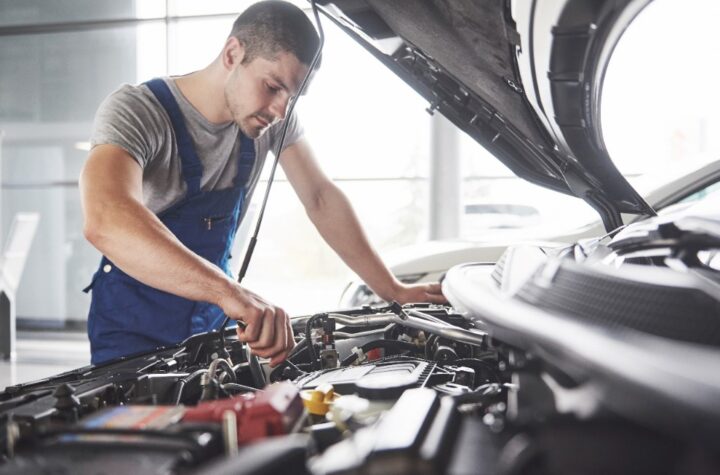
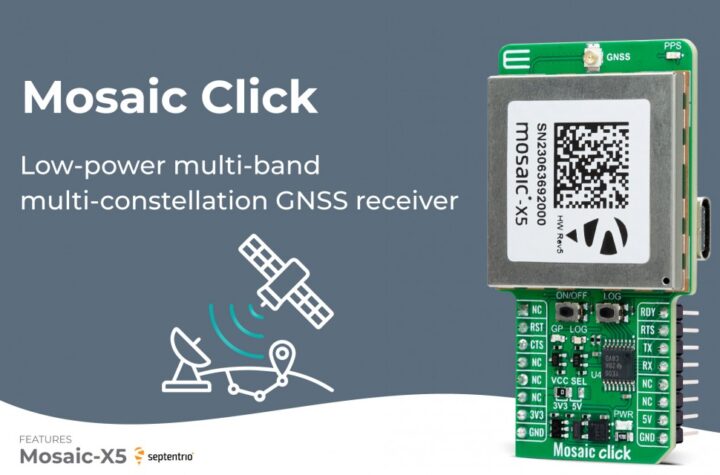
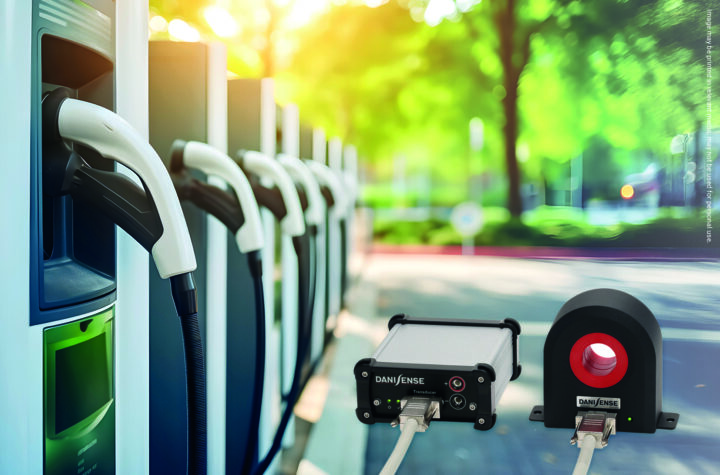
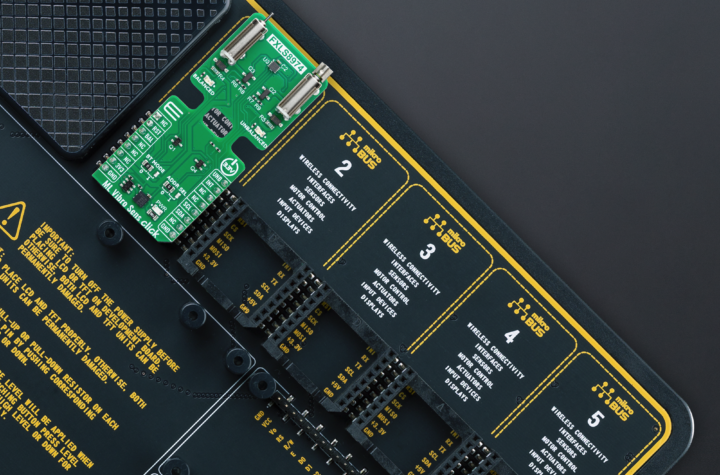
More Stories
Mosaic Click board from MIKROE delivers global coverage multi-band and multi-constellation tracking ability
Current transducer from Danisense selected for DC charging station testing device demonstrator at TU Graz
New Click board from MIKROE helps develop and train ML models for vibration analysis